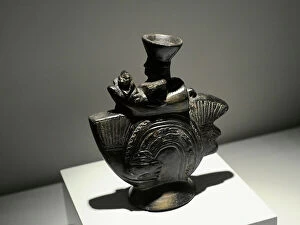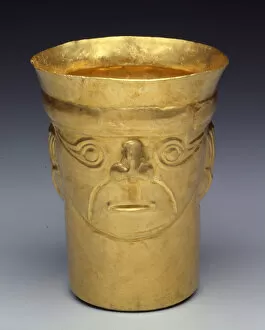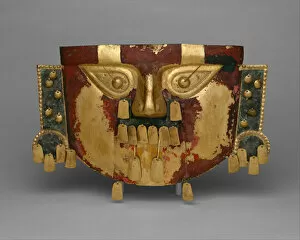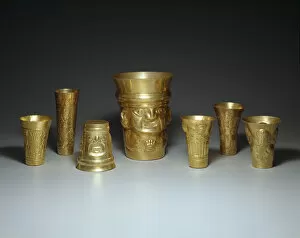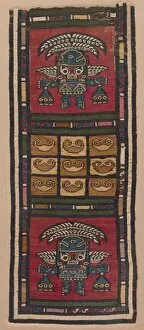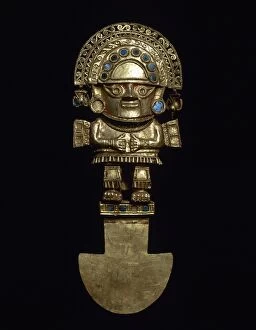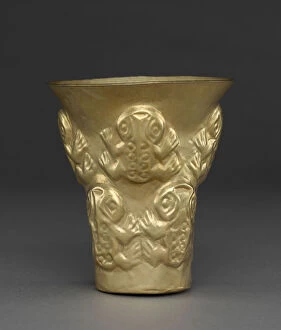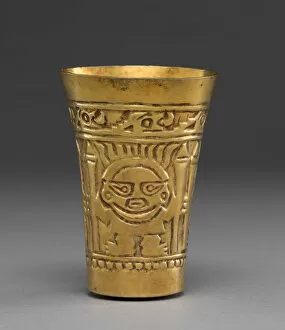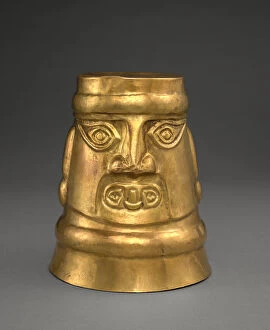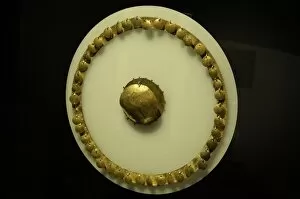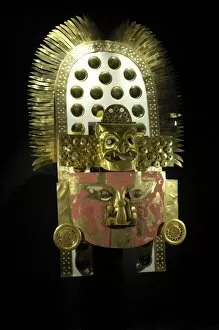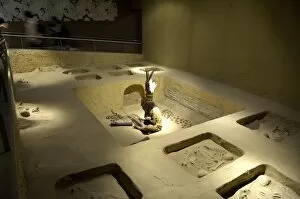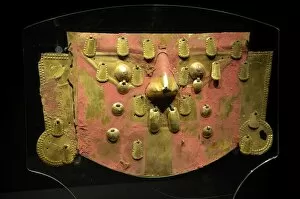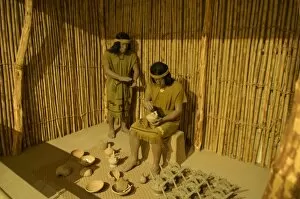Sican Collection
The Sican culture, also known as the Lambayeque culture, left behind a rich legacy of exquisite ceramic artwork
For sale as Licensed Images
Choose your image, Select your licence and Download the media
The Sican culture, also known as the Lambayeque culture, left behind a rich legacy of exquisite ceramic artwork. One such example is the sculptural vessel that showcases their artistic prowess. Crafted with precision and skill, this ceramic masterpiece reflects the intricate details and craftsmanship of the Lambayeque people. Moving on to another remarkable civilization, we delve into the Chimu culture and its iconic Tumi. The sacrificial ceremonial axe made of gold symbolizes power and authority in ancient Peru. This artifact serves as a testament to the Chimu's advanced metalworking techniques and their religious practices. Gold continues to take center stage with the Double-Faced Cup from 900-1100 AD. Adorned with intricate designs, this golden cup exemplifies both beauty and functionality during that era. Peruvian Funerary Mask from 900-1100 AD is an awe-inspiring piece crafted using gold, silver-copper overlays, and cinnabar pigments. This mask not only served as a burial adornment but also represented spiritual beliefs held by these ancient civilizations. Cups featuring standing figures and war clubs further showcase the mastery of goldsmithing during this period. These cups were likely used for ceremonial purposes or perhaps even as status symbols among high-ranking individuals. Another set of cups adorned with birds and heads demonstrates how nature played a significant role in Andean cultures' artistic expressions. The delicate detailing on these golden cups highlights their reverence for wildlife. Beakers made between 900-1100 AD continue to captivate us with their elegance. These vessels were most likely used for drinking rituals or special occasions due to their ornate design. Kero (Ceremonial Drinking Vessel) dating back to c. 1000-1476 showcases an alloy of gold that was highly valued by these ancient societies for its symbolic significance in ceremonies related to feasting or offerings.

